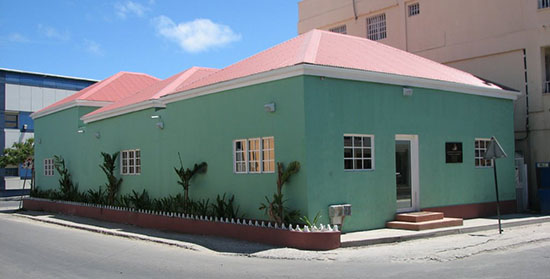Real land-owners are those with a properly registered deed at the Cadastre

PHILIPSBURG — It is possible to sell the same plot of land to different buyers but when push comes to shove there will only be one real owner: the one who managed to get the deed properly registered at the Cadastre before any of the other buyers.
There are many misunderstandings about land-ownership in St. Maarten. One of them is that a buyer becomes toe legal owner once the purchase agreement had been completed at a notary office. This is incorrect. After the formalities at the notary are completed, the notary has to properly register the deed at the Cadastre. Without that registration, buyers own nothing and that becomes a problem when the land is sold for the second (or the third) time to another party that did register the deed.
This principle does not only apply to buying land but also to obtaining the right of long lease on a property. In the case of long lease, the holder of those rights cannot sell what is built on the land separately. “What is built on the land is considered to have become part of the land. It is included in any transfer of land rights,” says former Cadastre-director Clemens Roos. He notes that it is possible to make a sales agreement that excludes whatever is built on the land but there is one major problem: the law does not recognize such agreements. “The party that assumes it still owns what is built on the land will find out that she or he has been lured into a trap and owns nothing.”
Therefore, ownership only becomes an indisputable fact after the notary has presented the transfer deed to the Cadastre and after the Cadastre had properly registered it.
Roos acknowledges that it is possible to sell land to more than one buyer. “But is can be delivered only to one buyer. The party whose deed is registered the first at the Cadastre will acquire the rights to the land. Other buyers cannot make any claim to it and they will have to reclaim their money from the seller.”
Taking back long lease land
Government can take back long lease rights without going through a civil court procedure,
Roos says. The government would have to begin such a procedure by issuing a notice of default that gives the lease holder a set period, like four weeks, to fulfill the conditions of the decree. After a second such notice (and after the leaseholder still fails to comply) it is up to the minister to declare the right of long lease expired. This decision makes a property again domain land through a withdrawal deed that needs to be registered at the Cadastre.
Another option open to someone who has acquired land in long lease is to sub-lease it to a third party. However, this is only legal after the lease holder obtains approval from the government. Without that permission transfer to a sub lease party is null and void. The term of the sub lease cannot exceed the term of the original long lease contract.
In the meantime, the Cadastre remains a troubled institution, especially after it fired its only educated land surveyor, Robert Boekhold. While it is not likely that the Cadastre will reinstate Boekhold, it is clear that the organization needs and experienced land surveyor with a HBO-degree in land surveying.
###
Related articles:
Jumbie in the Kadaster
The Cadastre in the news again – and it is not good – Part 1
Cadastre is no stranger to controversy – Part 2
Cadastre desperately needs a qualified director – Part 3
Minister Doran grants second right of long lease on same plot of land


























